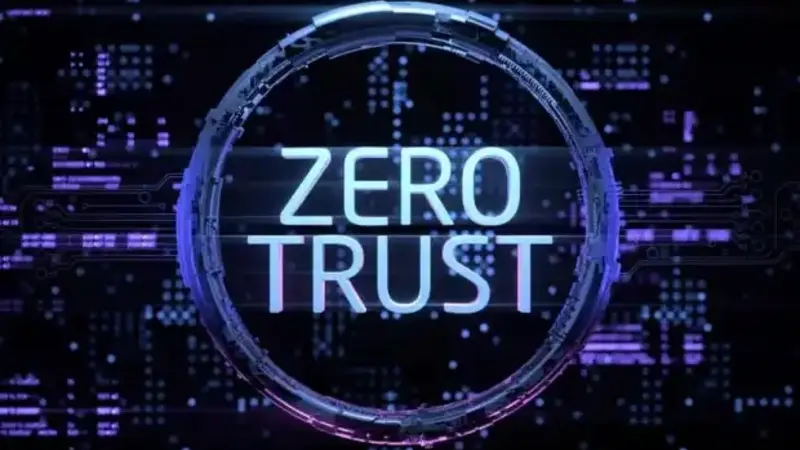Key Takeaways
- Zero Trust is a security model that assumes no entity, internal or external, is trustworthy by default.
- Implementing Zero Trust involves continuous verification, least privilege access, and micro-segmentation.
- Adopting Zero Trust can enhance security in remote and hybrid work environments.
- Challenges include integration with legacy systems and potential impacts on organizational culture.
- Future trends point towards integrating Zero Trust with AI and machine learning for adaptive security.
In an era marked by evolving cyber threats and distributed workplaces, traditional security perimeters no longer suffice. The Zero Trust model, grounded in the principle of “never trust, always verify,” is increasingly vital for organizations seeking to ensure robust digital security. Rather than assuming that everything inside the corporate network is safe, Zero Trust compels organizations to inspect and validate every user, device, and connection, regardless of origin. This security paradigm has rapidly gained traction, especially as remote and hybrid work models have expanded the attack surface and rendered perimeter-based defenses insufficient. Adopting a Zero Trust framework enables companies to build resilient security postures for the modern digital workplace.
Understanding Zero Trust
Zero Trust is a cybersecurity strategy that enforces strict identity validation for each person and device seeking network access, regardless of whether they are inside or outside the organization’s boundaries. By discarding the concept of a trusted internal network, this approach closes common security gaps that attackers exploit, such as lateral movement following a single compromised account. The foundation of Zero Trust lies in assuming every access attempt is potentially malicious until proven otherwise. Verification happens continuously, so each session, connection, and data request is subject to strict scrutiny. This not only mitigates risks from external threats but also addresses dangers originating from malicious insiders or compromised endpoints.
Core Principles of Zero Trust
- Continuous Verification: Every access attempt—no matter how seemingly routine—is authenticated and authorized in real time. Persistent revalidation ensures security policies adapt to changing risk levels and user contexts.
- Least Privilege Access: Access is tightly controlled, only permitting users the minimal permissions they need to accomplish their tasks. This principle dramatically limits what potential attackers can reach, should credentials be compromised.
- Micro-Segmentation: Dividing the network into multiple smaller zones restricts lateral movement by containing breaches and confining threats to isolated segments. Each segment is protected by its own security controls and verification requirements.
Implementing Zero Trust in Remote Work Environments
The broad adoption of remote and hybrid work has fundamentally changed how organizations approach security. With users accessing sensitive data from a variety of devices and locations, traditional access controls simply can’t keep up. Implementing a Zero Trust model provides a consistent security framework that follows users wherever they go.
- Multi-Factor Authentication (MFA): Enforcing MFA elevates security by requiring users to verify their identity using two or more factors before they gain access. Even if someone compromises a password, they still encounter additional barriers.
- Device Security Posture: Limiting access to devices that comply with organizational security standards—through up-to-date patches, endpoint protection, and configuration checks—reduces risk from vulnerable or noncompliant endpoints.
- User Behavior Monitoring: Implementing monitoring tools that flag atypical or risky user actions enables early detection of compromised accounts or insider threats, allowing swift response before damage escalates.
These measures ensure that remote and on-site workers alike benefit from uniformly strong access protections, helping mitigate the unique risks associated with distributed workforces. Resources such as Microsoft’s overview of Zero Trust for hybrid work provide more guidance on securing work-from-home environments.
Challenges in Adopting Zero Trust
While Zero Trust provides a powerful framework, its successful deployment can present notable hurdles for many organizations.
- Integration with Legacy Systems: Many legacy applications and infrastructure elements lack the native capabilities to support Zero Trust controls like robust authentication and granular segmentation. This often necessitates costly system upgrades, custom integrations, or phased rollouts that bridge old and new environments.
- Organizational Culture: Employees may initially perceive increased scrutiny, authentication prompts, and monitoring as signals of distrust. It’s crucial for leaders to communicate the rationale—protection of organizational and personal assets—and to balance usability with security, fostering a resilience-focused security culture.
These barriers underscore the need for executive buy-in, comprehensive training, and transparent communication as organizations transition to a Zero Trust model.
Future Trends in Zero Trust
The future of Zero Trust lies in intelligent automation and adaptive security. As cyberattacks grow more sophisticated, organizations are increasingly turning to artificial intelligence (AI) and machine learning (ML) to enhance Zero Trust implementations. By layering AI and ML on top of existing verification and monitoring controls, it’s possible to detect subtle deviations in normal behavior, automate threat response, and dynamically adjust access permissions based on risk scores. This fusion of Zero Trust with advanced analytics creates a proactive, flexible defense posture. According to the World Economic Forum, this adaptive approach is expected to shape the next generation of cyber resilience strategies, providing rapid, intelligent responses to new and evolving threats.
Conclusion
The modern digital workplace demands a holistic security stance that rises above outdated notions of network perimeters. Zero Trust answers this need by mandating continual verification, strict access management, and strategic network segmentation, regardless of where employees work or where resources reside. Overcoming the challenges of integration and user adoption is essential, but the resulting resilience against both external and insider threats is well worth the effort. As organizations leverage AI and ML to bolster these controls, Zero Trust will remain the cornerstone of adaptive, future-focused security strategies. Visit my site, World Track Mag, for more details.
